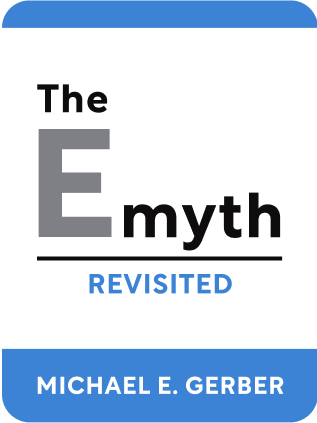

This article is an excerpt from the Shortform book guide to "The E-Myth Revisited" by Michael E. Gerber. Shortform has the world's best summaries and analyses of books you should be reading.
Like this article? Sign up for a free trial here .
Do you think like an entrepreneur? What are the elements of an entrepreneurial perspective?
In The E-Myth Revisited, Michael E. Gerber suggests that you might need to think of your business in a new way. He provides an exercise for reconceptualizing your business, prompting you to think of it as though it was a prototype for thousands more.
Keep reading to learn about the entrepreneurial perspective, what it entails, and how to think like an entrepreneur.
Rethinking Your Business
Before applying the prototype business format, you need to think of your business in a new way. Think like an entrepreneur. Adopt a healthy entrepreneurial perspective.
The first and most important principle is that your business is separate from your life. Your business must serve your life, as opposed to your life serving your business. When you accept this principle, your business becomes an entity you shape and work on rather than in. This perspective should drive all of your actions.
Creating a franchise prototype helps you do this. Try this exercise to move toward an entrepreneurial perspective and to reconceptualize your business. Think of it as though it were the prototype for thousands of others like it.
Imagine you’re going to franchise it with the following guidelines. How would your franchise prototype look compared to the way your business looks today?
1) Your model will provide a level of value to your customers and everyone else your business touches that’s consistent and exceeds expectations.
The answer to how your business will provide value is the reason for its existence. Your customers, employees, and suppliers, not you, define the value your business provides. It’s reflected in such things as the way you greet customers and recognize/reward employees, the price of your service or product, or the time you spend answering a customer’s questions.
2) Your model can be applied by people with the minimal skills necessary for each position. If you base it on highly skilled people, you’ll have a harder time filling positions and you’ll pay more. Further, your model will be hard to reproduce.
Make your business dependent on systems rather than people. People can still help you improve your systems by coming up with ways to serve customers better. But when your business is people-dependent, it’s subject to their moods — you have to motivate them — and can’t produce consistent results. Your system is a tool you develop and use to teach people to do the work of your business and differentiate it from competitors. This is what you see when you have an entrepreneurial perspective.
3) Your model provides organization and order. There’s more than enough chaos in the world; most people are looking for order. A business that appears organized gives your customers, employees, and suppliers confidence that it can deliver the results they want.
4) Your model is documented in an operations manual. Documentation provides your employees with clarity. It explains the purpose of the work, the steps for doing it, and the standards that must be met. Without documentation, everyone creates their own processes and standards.
5) Your business provides consistent service. To be comfortable with your business, customers must receive the same service, in the same way, each time. If they don’t know what to expect, they’ll stop coming back. When you run a business arbitrarily, you’re running it for yourself, not the customer. This is not consistent with an entrepreneurial perspective.
6) Your business has a coherent, uniform look. Everything, including the office design, employee dress code, business cards, signs, and printed materials, should be coordinated. Colors, shapes, and overall look motivate customers and should be professional and research-based.
An entrepreneurial perspective causes you to work on your business rather than in it. To work on your business:
- Design it to work without your constant presence.
- Design it in a way that enables people to work without close oversight.
- Systematize it so that it works automatically, can be replicated, and allows you to do what you love rather than what you have to do.
When you can answer these questions, you’ll be thinking of your business in a new way, as your product, and with a new level of excitement. You’ll have an entrepreneurial perspective, which can be the key to your success.

———End of Preview———
Like what you just read? Read the rest of the world's best book summary and analysis of Michael E. Gerber's "The E-Myth Revisited" at Shortform .
Here's what you'll find in our full The E-Myth Revisited summary :
- Why so many new business owners fail
- Why how you produce something is more important than what you produce
- The 7 components that you as an owner must work through






